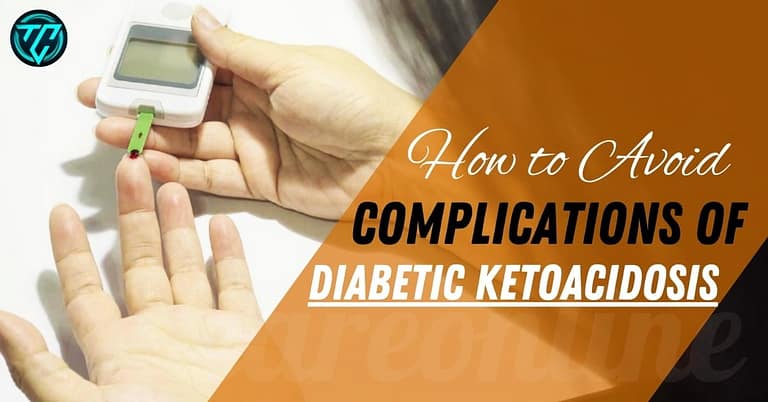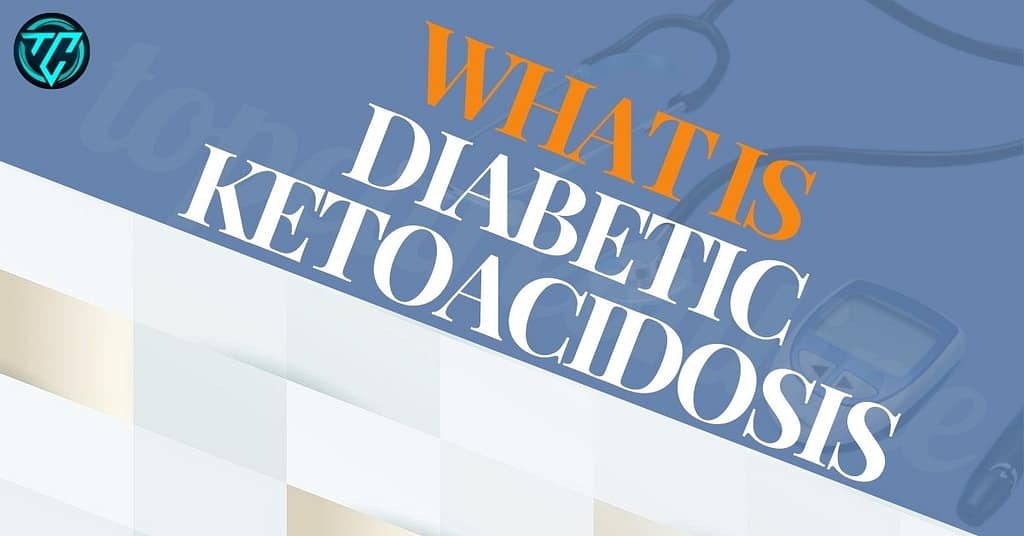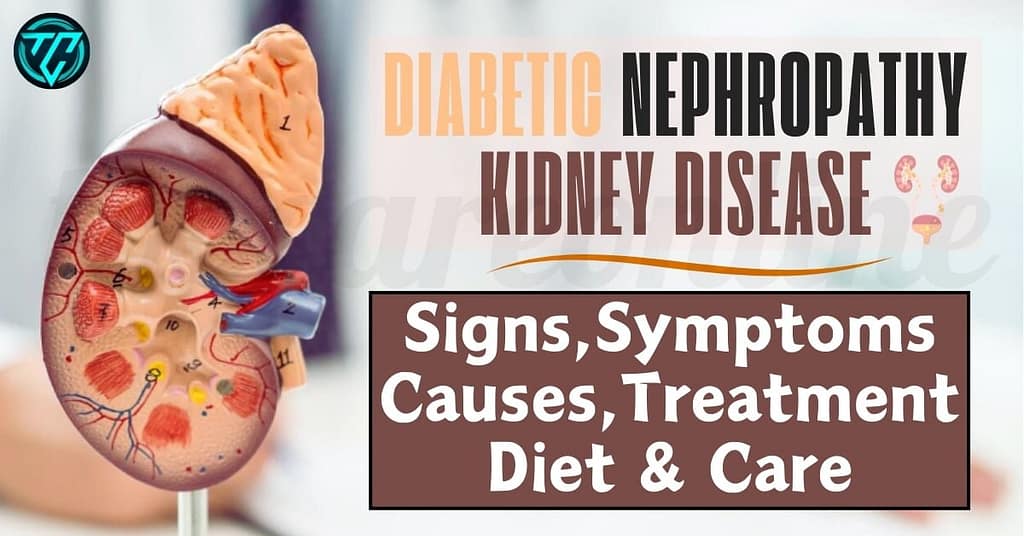On This Page
What is ketoacidosis exactly and how can lead to serious complications of diabetic ketoacidosis?
If you or someone you care about has diabetes, understanding the risks of diabetic ketoacidosis (DKA) is crucial. DKA is more than just a spike in blood sugar—it’s a dangerous condition that can affect your entire body if not treated quickly.
we’ll break down what is ketoacidosis , why it happens, and the severe complications that can arise if it’s not managed properly. From brain swelling to kidney failure, the effects of DKA can be life-threatening. Keep reading to learn how to recognize the warning signs, complications of diabetic ketoacidosis in detail, as well as steps for managing and preventing before it’s too late!
What is Ketoacidosis?
Before diving into complications, let’s clarify what is ketoacidosis? Diabetic Ketoacidosis occurs when your body produces high levels of blood acids called ketones. This happens when your body …
Read More:
Symptoms of Diabetic Ketoacidosis
Recognizing the early symptoms of diabetic ketoacidosis can help in seeking treatment before complications arise. Some common signs include:
- Excessive thirst and frequent urination
- High blood sugar levels
- Nausea and vomiting
- Abdominal pain
- Shortness of breath
- Fruity-scented breath (due to high levels of ketones)
If you experience any of these symptoms, particularly in combination, it’s important to seek immediate medical attention.
Complications of Diabetic Ketoacidosis
Now that we’ve covered what is ketoacidosis, it’s essential to understand the potential complications of diabetic ketoacidosis that arise if DKA is left untreated. These complications can affect various organs and may even lead to death in severe cases.
- Cerebral Edema (Brain Swelling)
One of the most serious complications of diabetic ketoacidosis is cerebral edema. This condition occurs when the brain swells, which can lead to confusion, headaches, and, in severe cases, coma or death. Children with DKA are particularly at risk of developing cerebral edema. - Cardiac Arrhythmias (Irregular Heartbeats)
Elevated levels of ketones and electrolyte imbalances can trigger abnormal heart rhythms. This may cause palpitations, chest pain, or even heart failure. In severe cases, cardiac arrest can occur, particularly if potassium levels in the body drop too low.
Learn More:
Diabetes and cardiovascular disease (CVD) are two of the most pressing health issues facing individuals worldwide - Kidney Damage
The kidneys are vital organs responsible for filtering waste from the blood. During DKA, the high levels of glucose and ketones in the blood strain the kidneys, which can lead to kidney damage or even acute kidney failure. If not treated in time, the damage may become irreversible, requiring dialysis.
Learn More:
Diabetic nephropathy kidney disease is a serious condition that can develop as a complication of diabetes. This blog post aims to provide a detailed and informative guide. - Severe Dehydration
DKA causes frequent urination, which leads to the loss of vital fluids and electrolytes. Severe dehydration can result in low blood pressure, shock, or even unconsciousness. Proper fluid replacement, both in the form of oral hydration and intravenous fluids, is a critical part of DKA treatment. - Coma
In extreme cases, diabetic ketoacidosis can result in a diabetic coma. This occurs when blood sugar and ketone levels become dangerously high, leading to the shutdown of body systems. A person in a diabetic coma cannot respond to stimuli and requires immediate emergency medical care.
Factors That Increase the Risk of Diabetic Ketoacidosis
Not everyone with diabetes will develop DKA, but certain factors can increase the likelihood:
- Missed insulin doses: Skipping or reducing insulin doses can lead to dangerously high blood sugar levels.
- Infections: Illness or infection can elevate blood sugar levels and trigger DKA.
- Poor diabetes management: Inconsistent monitoring and uncontrolled diabetes significantly heighten the risk.
- Physical or emotional stress: Periods of high stress can alter blood sugar levels and put the body at risk for DKA.
Treatment of Diabetic Ketoacidosis
The treatment of diabetic ketoacidosis involves a multi-step approach to stabilize the patient, restore normal blood chemistry, and address the underlying cause.
Read More:
How to Manage and Prevent Complications of Diabetic Ketoacidosis
To avoid the severe complications of diabetic ketoacidosis, managing your diabetes is essential. Here are key steps to prevent the onset of DKA:
- Monitor Blood Sugar Levels Regularly: Keeping track of your blood sugar levels can alert you to high glucose levels before they become dangerous.
- Check Ketone Levels: If your blood sugar is consistently high, use a home ketone testing kit to ensure ketone levels are under control.
- Take Insulin as Prescribed: Never skip insulin doses, even if you’re feeling well. Follow your doctor’s recommendations closely.
- Stay Hydrated: Drink plenty of water, especially if you notice high blood sugar levels. Staying hydrated helps prevent dehydration and flushes ketones out of the body.
- Seek Medical Attention Early: If you suspect you are developing DKA, seek medical help immediately. Early intervention can prevent complications from developing.
Taking action early, monitoring blood sugar and ketone levels, and staying vigilant with insulin therapy will significantly reduce your risk of developing DKA and its complications.
Understanding Diabetic Ketoacidosis and Staying Safe
Diabetic Ketoacidosis is a dangerous complication of diabetes that can develop rapidly. Knowing the signs, symptoms, and preventive measures can make a difference between a manageable situation and a medical emergency. Always stay proactive in your diabetes management and consult with your healthcare provider regularly.
Remember: If you or a loved one experience symptoms of DKA, seek medical attention immediately. How long does it take to die from Diabetic Ketoacidosis? The answer emphasizes the critical importance of timely treatment to avoid severe complications and potentially fatal outcomes.
Frequently Asked Questions







